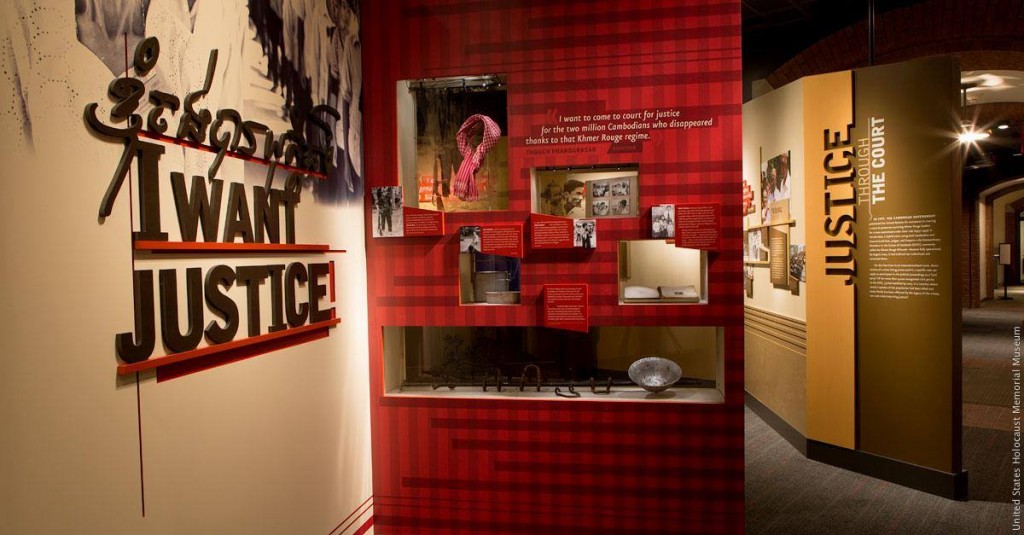L’année 2015 marque les 40 ans de la chute de Phnom Penh et la prise de pouvoir des Khmers rouges qui ont perpétré un génocide provoquant 1 million 700 000 victimes. Parmi les manifestations et les commémorations au Cambodge, en Europe et ailleurs, on signalera deux expositions organisées au musée du mémorial de l’Holocauste des Etats-Unis : « Cambodia 1975-1979 » explore l’idéologie des Khmers rouges et leurs actions. Parallèlement, « I Want Justice! » montre les efforts des Cambodgiens et de la communauté internationale à poursuivre en justice les responsables de ces crimes.
« Cambodia 1975–1979 examines the murderous actions taken by the Khmer Rouge to establish their new state, “Democratic Kampuchea,” as a self-sustaining farm-based society, free from outside influence. Phnom Penh’s two million residents were driven out of their city within hours of its capture and sent to the countryside, where they were quickly pressed into forced labor brigades on massive earthworks and rice paddies. During the Khmer Rouge era, hundreds of thousands of Cambodian civilians starved, dropped dead of exhaustion or disease, or were executed as punishment for failure to meet production goals or for suspicion of disloyalty to the regime. »
“I Want Justice!” explores the history of efforts to hold perpetrators of genocide and mass atrocities accountable through court proceedings, from the Nuremberg trials to the ongoing trials in Cambodia of surviving Khmer Rouge leaders most responsible for the crimes against the Cambodian populace between 1975 and 1979. It also looks at ways Cambodian survivors are seeking other forms of “justice”—personal, cultural, historical—as they continue to struggle with the legacy of the murderous Khmer Rouge era. »

